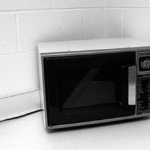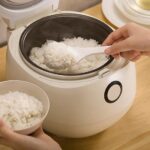While most households own a rice cooker, not everyone uses it correctly. Whether or not to unplug the rice cooker after the rice is cooked to protect the appliance and save energy remains a common concern.
Should you unplug the rice cooker after the rice is cooked?
The answer ultimately depends on your personal preferences and priorities. If you prefer your rice to be piping hot, you may choose to keep it on the “warm” setting until mealtime. On the other hand, if energy conservation and appliance maintenance take precedence, unplugging the cooker is advisable, especially once the rice has been served.
During the cooking process, the rice cooker operates in “cook” mode, using a higher wattage to bring the water to a boil and cook the rice through steam heat. Once the water is absorbed, the cooker automatically switches to “warm” mode, using a lower wattage to continue cooking the rice gently and maintain its temperature without burning.
The “warm” mode is designed to keep the rice at an ideal temperature without drying it out. This feature ensures that your rice remains warm and ready to be served even if you don’t eat immediately after cooking.
 Unplug the rice cooker when not in use for extended periods or once all the rice has been served. (Image: Lifehacker)
Unplug the rice cooker when not in use for extended periods or once all the rice has been served. (Image: Lifehacker)
By leaving the rice cooker plugged in, it will automatically maintain the warmth of your rice, ensuring it stays in its optimal state. This is particularly convenient for families who enjoy multiple rice-based meals throughout the day or have members returning home at different times. With the rice cooker doing the job, there’s no need to reheat the rice, saving time and effort. The warm setting also prevents the rice from spoilage or bacterial growth, which is crucial in hot and humid weather.
The warming function helps retain the rice’s natural softness and moisture. Allowing the rice to cool completely and then reheating it tends to result in dry, hard, or less fluffy rice.
However, there are instances when unplugging the rice cooker is necessary. If you don’t require the rice to be kept warm or have finished eating, it’s best to unplug the appliance to conserve energy. While the warming function uses minimal electricity, keeping it on for extended periods, especially when the rice is not being consumed, can lead to unnecessary energy waste.
Additionally, prolonged warming (over 12 hours) can cause the inner pot to dry out, leading to burnt residue at the bottom. This not only affects the taste of your rice but also reduces the lifespan of the cooker. For older or lower-quality rice cookers, continuous operation may pose risks of electrical short circuits or explosions, especially with unstable power sources.
When should you unplug the rice cooker?
– After the rice is cooked and you plan to eat immediately: If your household typically eats one rice-based meal a day, turning off and unplugging the cooker after cooking is a sensible option.
– When there is no need for prolonged warming: If the cooked rice won’t be consumed within a short time, allow it to cool to room temperature and then store it in the refrigerator. When needed, simply reheat it using a microwave or steam it.
– When the rice cooker has been operating for an extended period: To prevent overheating or reducing the lifespan of the appliance, unplug the cooker if the warming function has been active for more than 8-10 hours.
Using your rice cooker correctly
 Proper use of your rice cooker will not only result in delicious meals but also prolong the appliance’s lifespan and ensure your family’s safety. (Image: Serious Eats)
Proper use of your rice cooker will not only result in delicious meals but also prolong the appliance’s lifespan and ensure your family’s safety. (Image: Serious Eats)
– Check your rice cooker type: Higher-end rice cookers often feature intelligent warming functions that automatically adjust the temperature to prevent overcooking. If you own a conventional rice cooker, avoid keeping it on warm for too long.
– Wipe the inner pot dry before cooking: Ensure the inner pot is thoroughly dried to maintain its warming and non-stick capabilities.
– Avoid warming small portions: Warming a small amount of rice can lead to burnt residue at the bottom of the pot or dry, hard rice.
– Regularly clean your rice cooker: After each use, clean the inner pot and lid to prevent moisture buildup, which can cause unpleasant odors or mold. Pay particular attention to the steam vent to ensure efficient cooker performance.
Using your rice cooker correctly will not only enhance your culinary creations but also prolong the appliance’s lifespan and ensure the safety of your family.
According to VTCnews



































